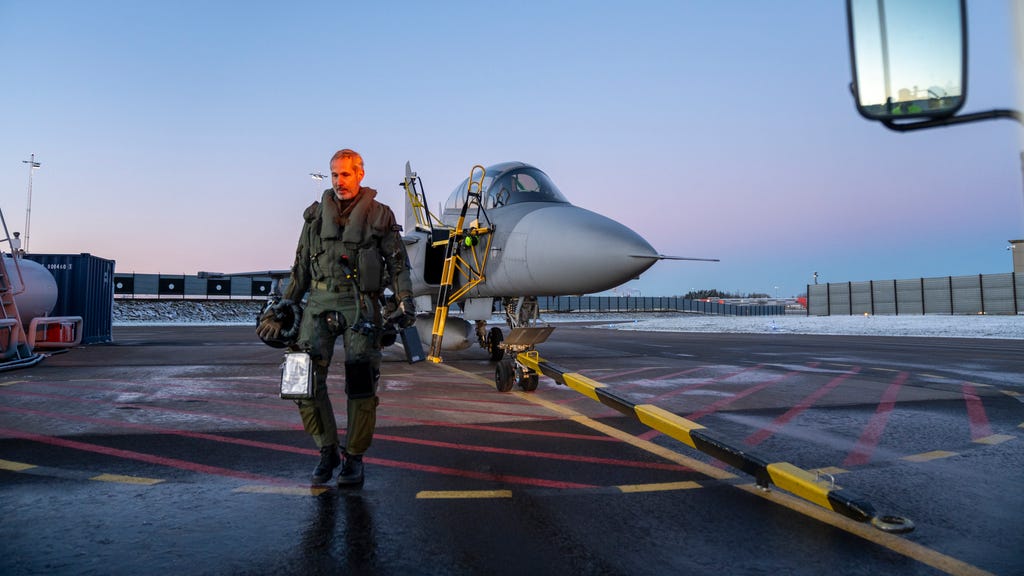The Future of Swedish Air Power: A Multi-Billion Kronor Dilemma
Behind the scenes of Swedish defense policy, a high-stakes battle is unfolding, with hundreds of billions of kronor hanging in the balance. At the heart of the debate lies the future of Swedish air power, specifically the successor to the iconic JAS Gripen fighter jet. Saab, the Swedish defense company responsible for approximately one-third of Sweden’s defense spending, is lobbying intensely for the development of a new, cutting-edge fighter aircraft. They are pushing for a swift decision, ideally by 2026, to maintain momentum in their development and production capabilities. This aggressive timeline underscores the economic and strategic significance of the decision for Saab and, by extension, for Sweden.
A key argument in favor of Saab’s proposal centers on domestic economic benefits. Political parties like the Social Democrats, Sweden Democrats, and the Left Party see significant advantages in keeping the development and manufacturing of the next-generation fighter within Sweden. This would secure jobs, maintain crucial technological expertise, and ensure Swedish control over the entire project, a point emphasized by Social Democrat defense spokesperson Peter Hultqvist. The shared sentiment across the political spectrum highlights the perceived national importance of a domestically produced fighter jet.
However, the path to a new Swedish fighter is not without its critics. Concerns exist that a domestically developed Gripen successor could consume a disproportionate share of future defense budgets. Neighboring countries like Norway, Denmark, and Finland opted for the American F-35, arguing that procuring an already developed platform is more cost-effective. Their decision also underscores the geopolitical considerations at play, as purchasing American military hardware strengthens ties with the US and carries significant weight in Washington. This aspect has been further amplified by the current US administration’s focus on leveraging arms sales for strategic advantage.
Saab acknowledges the political dimension of such decisions, recognizing that fighter jet purchases are often intertwined with security partnerships. Jerker Ahlqvist, Chief of Staff at Saab Government Affairs, emphasizes that acquiring a foreign-developed aircraft inevitably creates a strategic alliance with the supplying nation. While Saab naturally advocates for a Swedish solution, they also stress the need for a rapid decision. This urgency is driven by the need to maintain their skilled workforce and development infrastructure, both crucial for Saab’s long-term competitiveness.
The Swedish government has already invested billions of kronor in preliminary studies and prototype development for a future fighter system, signaling a commitment to exploring a domestic option. An upcoming government inquiry, involving all parliamentary parties, will further evaluate the available options. Defense Minister Pål Jonson hopes to achieve a broad political consensus on the future of Swedish fighter jets, recognizing the long-term implications of the decision, which will span multiple parliamentary terms. The government’s inclusive approach underscores the complexity and importance of this decision for Sweden’s future defense posture.
The current generation of Gripen, the JAS 39 Gripen E, is scheduled to enter service with the Swedish Air Force by the end of 2025. While this advanced fighter represents a significant leap in capability, it also highlights the challenges inherent in complex defense projects. Initially planned for 2023, the Gripen E program has faced delays and cost overruns, partly due to the withdrawal of Switzerland as a development partner. Despite the setbacks, the Swedish Air Force remains committed to the Gripen E, emphasizing its enhanced capabilities and the decision to retain and upgrade older Gripen C/D models to maintain operational strength.
The debate extends beyond the immediate choice between domestic development and foreign acquisition. International collaborations on next-generation fighter aircraft are already underway, including European projects and American initiatives. However, both the Swedish government and opposition parties view these existing collaborations as less favorable options due to their advanced stage and rapid pace, limiting Sweden’s influence. Sweden previously participated in a British-led project but ultimately withdrew. Thus, the choice seems to boil down to either continuing with Saab for a Gripen successor or opting for a future American platform, either an upgraded F-35 or an entirely new design. Justin Bronk, a renowned expert on fighter aircraft from the Royal United Services Institute (RUSI), suggests that while US security policy considerations might influence Sweden’s decision, he would be surprised if Sweden ultimately chose an American system.
Bronk also highlights the potential risks of foreign dependence, noting that while a US purchase strengthens ties with America, it also creates reliance on continued American support for the aircraft’s operation. He acknowledges Sweden’s impressive track record in developing and producing capable fighter jets domestically but cautions about the enormous costs involved. Developing a new generation of fighter aircraft independently, without the cost-sharing benefits of international collaboration, could amount to tens of billions of euros, a significant financial burden. This economic reality adds another layer of complexity to the decision-making process.
Looking further into the future, Saab’s vision for the next generation of fighter jets includes both manned and unmanned platforms, incorporating stealth technology, artificial intelligence, and advanced sensors. These concepts remain in the conceptual stage, with realization decades away. The path forward for Swedish air power is fraught with difficult choices, balancing national interests, technological advancements, and the ever-present constraints of budget and geopolitical realities. Ultimately, the decision will shape Sweden’s defense capabilities and its place within the international security landscape for decades to come.














